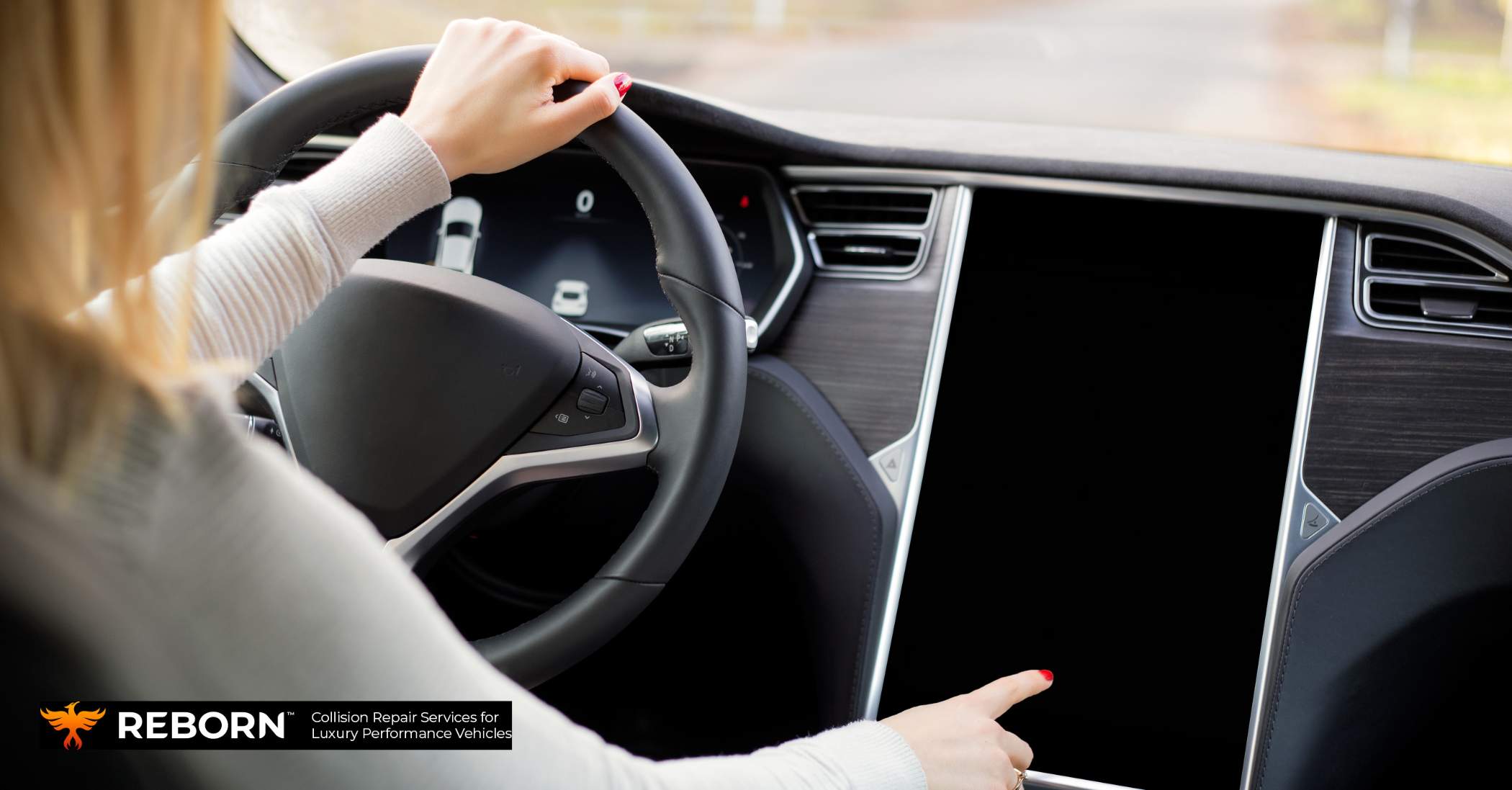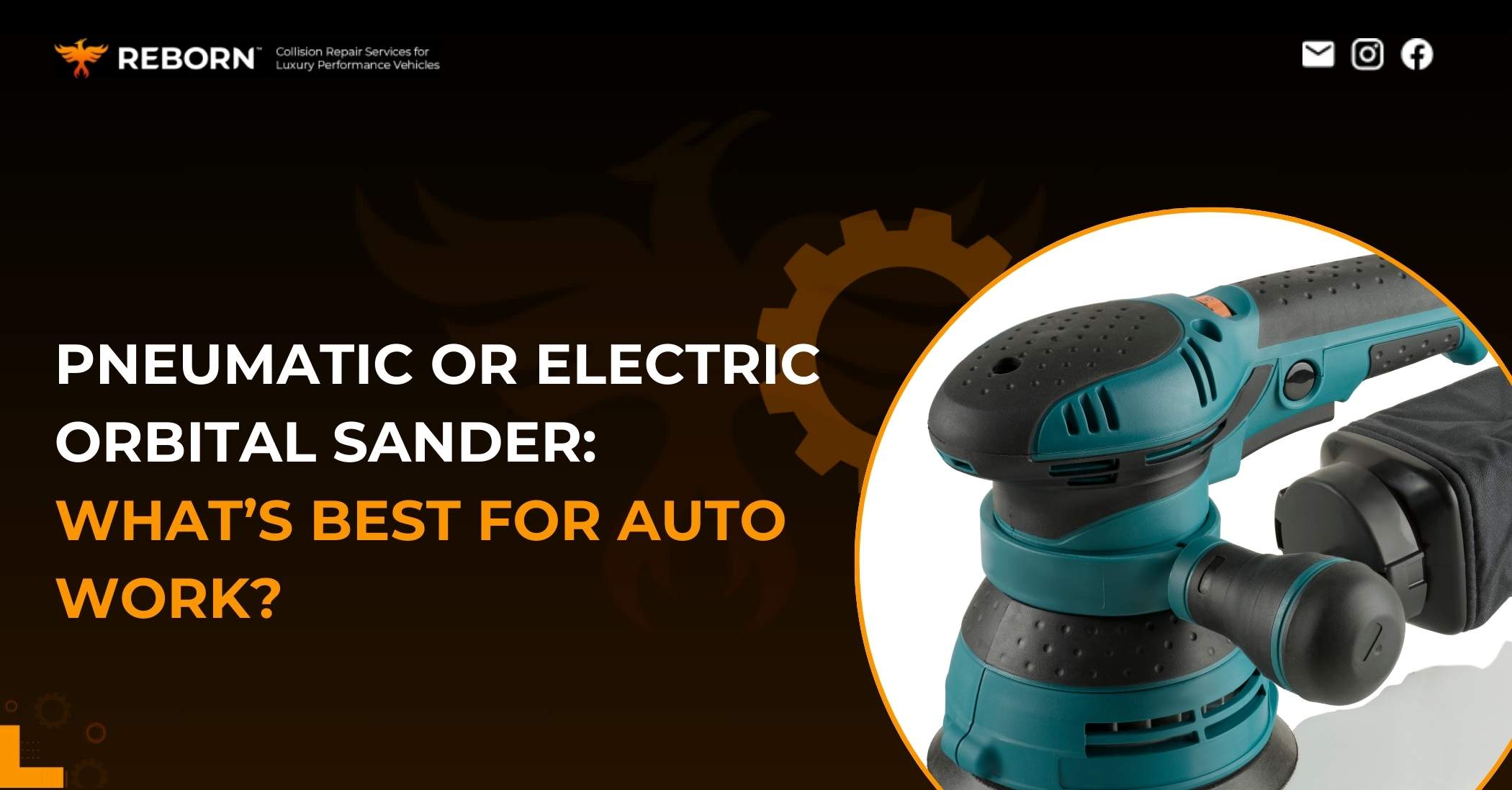Tesla has transformed the automotive industry with its cutting-edge electric vehicles, spearheaded by Elon Musk. These vehicles set new standards for innovation, sustainability, and performance, redefining the future of transportation.
Despite its groundbreaking advancements, Tesla, like any other automaker, faces challenges. Owners have reported issues ranging from battery degradation to panel alignment problems, demonstrating that even the most advanced vehicles are not immune to common automotive concerns.
This guide offers current and prospective Tesla owners a comprehensive look at the most common challenges they may face, along with actionable solutions to tackle them effectively.
By addressing these concerns and highlighting the value of professional autobody repairs—especially through Reborn Autobody’s specialized expertise—Tesla owners can make informed decisions and enjoy an optimal driving experience with their electric vehicles.
Top 10 Common Tesla Car Problems
Tesla cars are renowned for their cutting-edge technology and electric performance but, like any other vehicle, they are not without issues. Below are the ten most common problems Tesla owners may encounter, along with actionable tips and solutions to address them effectively.

Battery and Range Issues
Tesla owners often report concerns about battery degradation and range estimation. Factors such as driving habits, weather conditions, and battery age significantly impact performance.
Tesla Battery Maintenance Tips
- Daily Discharge Rate: Tesla batteries lose about 1% of charge per day when parked.
- Tips to Reduce Discharge: Enable energy-saving settings, turn off non-essential features like Sentry Mode in secure areas, and park in cooler locations to minimize heat stress.
- Cabin Overheat Protection: Tesla’s feature helps keep the interior below 90–100°F (32–38°C) to prevent extreme heat damage.
- Energy-Saving Tip: Use higher temperature thresholds to conserve battery power in hot climates.
- Sentry Mode Energy Usage: While Sentry Mode enhances security, it consumes additional power.
- Energy-Saving Tip: Disable it in safe locations to conserve energy.
- Extended Unplugged Periods: For extended absences (e.g., 14 days), charge the battery to account for ~1% daily discharge.
- Avoid 0% Battery: Running the battery to 0% can damage components. Tesla enters low-power mode at 0%, disabling non-essential electronics to protect the battery.
Range Optimization Tips
- Maintain Proper Tire Pressure: Regularly check and inflate tires to recommended levels for optimal efficiency.
- Practice Conservative Driving: Smooth acceleration reduces energy consumption and prolongs battery life.
- Use Regenerative Braking: Convert braking energy into stored power to extend the vehicle’s range.
Warranty Coverage: Tesla provides an 8-year or 150,000–200,000 km warranty for battery replacements, ensuring peace of mind for owners.

Suspension and Noise Concerns
Some Tesla models experience suspension problems, such as creaking noises caused by bushing wear in the upper forelinks. These noises are often noticed during slow movements, like parking.
Improvements in Newer Models
Tesla has enhanced suspension systems in newer models, such as the Model Y and Model S Plaid, using stronger materials and better design tolerances. For example, the Model 3’s advanced suspension system offers improved traction and stability through independent front and rear setups.
Certified Repair Solutions
Certified centers like Reborn Autobody provide comprehensive inspections and manufacturer-approved repairs, restoring performance to factory standards while minimizing downtime.
Preventative Maintenance Tips
- Schedule regular suspension inspections if you notice unusual noises or handling changes.
- Rotate tires and check wheel alignment periodically to reduce stress on suspension components.
- Avoid driving over rough terrain consistently, as it accelerates wear on suspension systems.
Software and Autopilot Glitches
Tesla’s advanced software and Autopilot system occasionally encounter glitches, ranging from minor inconveniences to safety concerns.
Tesla’s Commitment to Updates
Tesla regularly releases over-the-air updates to fix bugs and enhance features:
- Lane-Keeping Enhancements: Improved algorithms for road recognition.
- Adaptive Cruise Control: Smoother deceleration and acceleration.
- FSD Beta Updates: Enhanced handling of complex intersections for users enrolled in the Full Self-Driving program.
Regular updates and scheduled service visits help minimize software-related issues.

Interior and Exterior Quality Issues
Some Tesla owners report quality control issues, including paint defects, misaligned panels, and inconsistent interior trims.
Solutions for Quality Issues
- Paint Defects: Apply ceramic coatings or paint protection films (PPF) to prevent chipping. Schedule regular detailing for lasting durability.
- Misaligned Panels: Have panels realigned at Tesla-certified repair centers like Reborn Autobody to restore factory specifications.
- Inconsistent Trim: Replace loose components with Tesla-approved parts and use interior protectants to reduce wear.
Performance and Handling Problems
Tesla vehicles’ high torque and weight can accelerate tire wear and impact handling, especially in extreme weather conditions.
Tire and Handling Tips
- Rotate tires every 10,000–12,000 km for even wear.
- Equip winter tires in snowy regions for improved grip.
- Schedule alignment and balancing checks annually or after impacts to ensure proper handling.
Climate Control and HVAC Issues
Tesla owners occasionally encounter HVAC system problems, such as fluctuating fan speeds and direction.
Troubleshooting Tips
- Perform a soft reset by holding both scroll buttons on the steering wheel.
- Update software to fix potential HVAC-related bugs.
- Replace cabin air filters every 1–2 years for proper airflow.
Service and Repair Challenges
Tesla’s service model relies on a limited number of company-owned centers, leading to longer wait times for maintenance.
How Reborn Autobody Helps
- Provides mobile repair services, eliminating the need to visit service centers.
- Specializes in Tesla repairs with manufacturer-approved techniques, ensuring top-quality results.

Body and Paint Durability Concerns
Tesla’s paint durability, especially in cold climates, has faced criticism due to chipping and flaking.
Protection Tips
- Apply ceramic coatings, PPF, or wax to protect the paint.
- Wash your Tesla regularly to prevent salt and debris buildup in winter.
Comfort and Ergonomic Problems
While Tesla interiors are modern and sleek, some owners find the seats uncomfortable during long drives.
Solutions for Ergonomic Issues
- Add lumbar support or seat cushions for better comfort.
- Adjust steering wheel and display settings to minimize strain.
Phantom Braking Issues
Phantom braking—when the car brakes suddenly due to perceived hazards—has been a significant concern for Tesla owners.
Quick Fixes
- Keep software updated to reduce phantom braking incidents.
- Clear dirt and debris from sensors and cameras regularly.
- Report persistent issues to Tesla for resolution.
What is the most common issue with Teslas?
Tesla vehicles, while revolutionary, are not immune to common automotive problems. Some of the most frequently reported issues include sudden unintended acceleration, brake failures, and suspension concerns like “whompy wheels,” a term describing wheel collapses caused by faulty suspension components. These safety challenges emphasize the importance of routine inspections and maintenance to ensure reliability and performance.
Tesla continues to address these problems through improved designs and regular software updates, but owners should remain proactive in identifying and resolving such issues with the help of certified repair centers.
In Closing
Tesla’s electric vehicles have revolutionized the automotive industry, but they aren’t without challenges. From battery concerns to software glitches, addressing these issues is key to maximizing the ownership experience.
For specialized Tesla repairs, trust Reborn Autobody to deliver expert solutions and keep your car in top condition. With their manufacturer-approved training and commitment to excellence, Tesla owners can confidently enjoy the future of electric driving.








